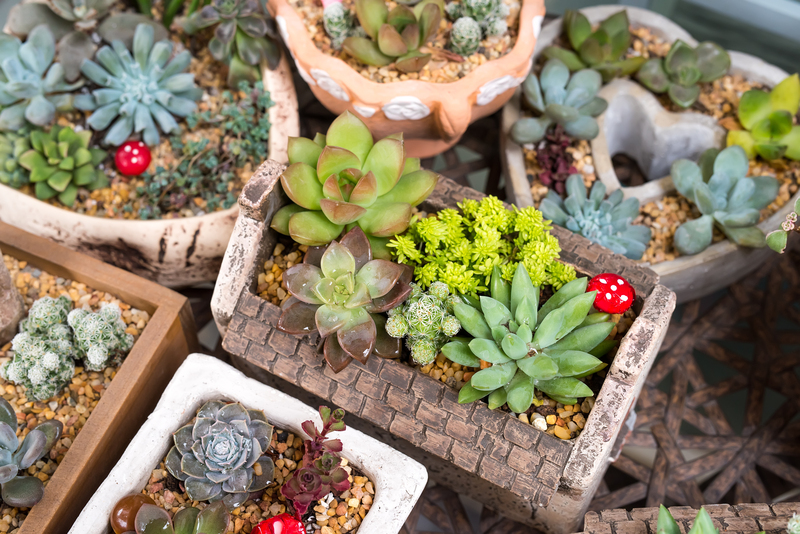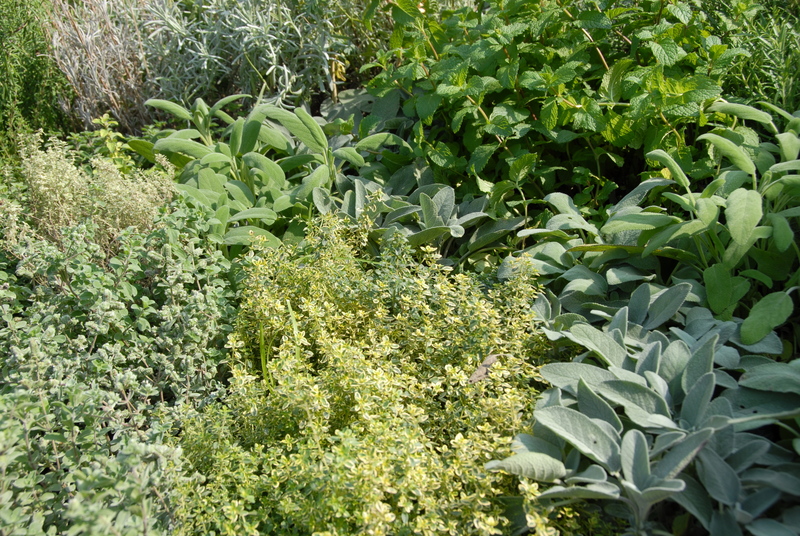Winter Warriors: How to Equip Your Garden for the Cold Months
Posted on 11/09/2025
Winter Warriors: How to Equip Your Garden for the Cold Months
Preparing your garden for winter is about more than just survival--it's about thriving when the thaw comes. Taking proactive steps as the days grow shorter and temperatures drop will protect your plants, soil, and wildlife, ensuring your garden bursts back to life come spring. Whether you're a seasoned horticulturist or a first-time gardener, equipping your garden for winter can make all the difference. In this comprehensive guide, we'll explore effective strategies, products, and tips to transform your outdoor space into a fortress against the cold and unlock its true potential as one of the season's winter warriors.
Why Winter Garden Preparation Matters
Many gardeners mistakenly assume the cold months mean a break from all gardening activities. However, adequate winter garden preparation is essential for several reasons:
- Plant Survival: Protect vulnerable plants from frost, snow, and freezing temperatures.
- Soil Health: Prevent soil erosion, nutrient depletion, and compaction caused by heavy winter rains or snow.
- Pest and Disease Control: Reduce the risk of overwintering pests and diseases that can attack in spring.
- Time and Money Savings: By equipping your garden for winter, you save on replanting, repairs, and replacements.
- Biodiversity: Help local wildlife find shelter and food in colder months.

Inspecting and Preparing Your Garden for the Cold
Being proactive about your cold season garden preparation pays off. Here's where to start:
Assess Plant Hardiness
First, know which plants are most at risk. Tender perennials, young shrubs, and exotic species may struggle in freezing temperatures. Use plant hardiness zone maps to evaluate which plants in your garden need protection.
- Move Potted Plants: Bring delicate potted plants indoors or into a greenhouse.
- Mulch Tender Roots: Apply a thick layer of **organic mulch** around the base of less hardy plants to insulate roots from extreme cold.
- Wrap Trees and Shrubs: Use burlap or tree wraps to shield trunks from cold snaps and fluctuating temperatures.
Clear, Clean, and Prune
Late autumn is the ideal time to clear out debris, leaves, and dead branches. This not only reduces hiding spots for diseases and insects but also minimizes chances of fungi and mold.
- Remove Spent Annuals: Pull out annual flowers and vegetables that have finished their life cycle.
- Prune Carefully: Trim damaged or diseased branches from trees and shrubs.
- Clean Up Debris: Rake leaves and **dispose of plant material**--either by composting or disposing of infected material.
Winter-Proofing Your Soil
Soil health is the backbone of a successful garden--even during the frigid winter months. Healthy soil will support microbial activity and improve drainage when temperatures rise.
Mulching--Your Soil's Winter Coat
Mulching is arguably the most valuable way to equip your garden for the cold. Benefits include:
- Insulation: Mulch helps maintain a more consistent soil temperature and reduces freeze/thaw cycles.
- Weed Suppression: A thick layer of mulch keeps winter weeds at bay.
- Moisture Retention: Mulch reduces evaporation and helps retain essential moisture in the soil.
- Soil Enrichment: Organic mulches break down over winter, restoring nutrients for spring.
Popular mulch choices include shredded leaves, straw, bark chips, or well-rotted compost. Spread 2-4 inches of mulch around your beds, keeping it clear of plant stems to prevent rot.
Green Manures and Cover Crops
Equipping your garden with cover crops (or green manures) is a holistic way to protect and rejuvenate soil over winter. Options like rye, clover, or vetch:
- Shield the soil from erosion and compaction.
- Fix nitrogen and enrich organic matter.
- Suppress weeds and support soil microbes.
Plant these in late summer or early autumn so they establish before the first freeze. In spring, simply turn them into the soil to boost fertility.
Frost and Snow Defense Tactics for Your Winter Garden
Using Cloches, Row Covers, and Polytunnels
Physical protection is crucial for winter gardening. Materials like cloches (miniature greenhouses), floating row covers, and polytunnels shield plants from frost and harsh winds.
- Cloches: Use glass, plastic, or even cut-off bottles to individually protect smaller plants.
- Row Covers: Lightweight fabric covers warm the air and soil just enough to prevent frost damage on larger beds or rows of vegetables.
- Polytunnels: Larger structures for semi-permanent protection throughout the winter.
Tip: Always ventilate on milder days to prevent overheating and discourage mold.
Windbreaks and Barriers
Wind can dramatically reduce temperatures at ground level and desiccate sensitive plants. Strategic planting or temporary screens (like burlap or hessian stretched between stakes) can shelter vulnerable areas.
- Plant evergreen hedges or install fencing for permanent windbreaks.
- Use temporary solutions for areas seldom affected or for young plants.
Protecting Water Features and Garden Infrastructure
Winterizing Your Pond or Fountain
Freezing water features can damage pumps, liners, and harm fish or aquatic plants. Take these preventive steps:
- Remove Pumps: Take pumps and filters out, clean them, and store indoors.
- Float a Ball: Place a floating ball on the water's surface to keep a hole open for gas exchange.
- Cover Small Ponds: Use mesh or netting to keep leaves out.
Tool Care and Garden Structure Maintenance
Your gardening tools and structures need attention, too! Before frost bites:
- Clean and oil tools: Remove debris and rust, then treat with lubricating oil.
- Check greenhouses and sheds: Inspect for leaks, clean glass, and replace any worn weatherstripping.
- Drain irrigation lines: Prevent burst pipes by emptying and turning off outdoor water sources.
Planning Your Winter Planting--Gardening Isn't Just for Spring!
Even in winter, your garden can offer color, texture, and interest. Some plants not only survive but thrive in winter's chill. Here's how you can diversify your winter garden:
Cold-Resistant Vegetables
Certain vegetables grow well in winter when given a little protection. Try these options:
- Kale
- Spinach
- Winter lettuce varieties
- Mache (corn salad)
- Swiss chard
- Leeks
- Brussels sprouts
Use row covers or cold frames for the best results and ongoing harvests.
Structural Plants that Shine in Winter
Don't let your garden fade to grey! Add architectural shrubs and evergreens for winter interest:
- Winterberry holly
- Witch hazel
- Dogwood with colorful stems
- Boxwood and yew for shaped hedges
- Ornamental grasses that hold their form
Tip: Position these plants for maximum visibility from windows for year-round enjoyment.
Wildlife-Friendly Winter Gardens
Equipping your winter garden for the cold benefits local wildlife as well. Birds, pollinators, and beneficial insects appreciate your efforts:
- Leave Seedheads: Plants like coneflower, rudbeckia, and sunflowers provide food and shelter.
- Install bird feeders and baths: Keep them clean and filled with fresh water (consider heated models for freezing weather).
- Build bug hotels: Offer protection for overwintering beneficial insects.
- Leave a pile of brush: Hedgehogs and other creatures will be grateful for a safe haven.
A healthy winter garden is a buzzing, chirping, living space--no matter the temperature!
Essential Tools & Supplies: Your Garden's Winter Armor
Having the right gear can make winter garden preparation easier and more effective. Here's a checklist:
- Heavy-duty gloves
- Long-handled pruners and loppers
- Garden fork and spade for turning over soil or compost
- Mulch and compost bins
- Row covers, cloches, or cold frames
- Watering cans (for mild winter days--avoid overwatering!)
- Frost blankets
- Tool sharpening kit
- Burlap, fleece, or hessian for wrapping

Common Winter Gardening Mistakes to Avoid
- Neglecting to water in winter: Many plants still need occasional watering, especially evergreens, when the ground isn't frozen.
- Improper pruning: Heavy pruning in late fall can stimulate new growth that will be killed by frost--stick to removing only dead or diseased material.
- Over-fertilizing: Fertilizing now can encourage ill-timed growth, weakening plants.
- Forgetting to mulch: Open, bare soil is more vulnerable to damage.
- Poor tool storage: Rusty, broken tools are less effective come spring.
Final Thoughts: Be a Winter Garden Warrior
Preparing your garden for winter is as important as spring planting. With proper planning and the right equipment, you can be confident your garden will weather the cold and come back better than ever. Embrace the role of the winter warrior; nurture your soil, shield your plants, and consider the wildlife that depends on your outdoor haven. When the first green shoots burst forth in spring, you'll know your effort was worth every minute.
Start preparing now and join the ranks of winter gardening champions. Your garden--and all its inhabitants--will thank you!

